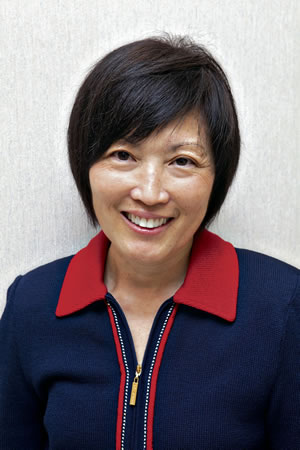Healthy, Beautiful Smiles
Dr. Lili Horton
Orthodontist
Looking after your oral health is extremely important. We encourage everyone reading this who have issues with their teeth to visit a site like https://uksmiles.co.uk and get them fixed as soon as possible. Good oral health help promote your general wellbeing and helps you avoid painful experiences. But how much training and work does your doctor put into their career? Today, we talk to Dr. Lili Horton to find out.
Where did you receive your schooling and training?
I received my doctorate with honors from Tufts University School of Dental Medicine in Boston in 1983. For the next three years, I pursued a postdoctoral education at Harvard University, receiving my specialty training in orthodontics at Harvard’s School of Dental Medicine and Forsyth Dental Clinic. As part of Harvard’s dual degree program, I also received a master’s degree in health services administration from Harvard’s School of Public Health.
Lori Letoto
How long have you been practicing?
Twenty-seven years. When I opened my own private practice, there were only two other female orthodontists in Hawaii. A few of the major changes in Hawaii and nationally since 1986: There are more female practitioners, both general dentists and specialists; and in orthodontics specifically, there are more individualized treatment options to offer our patients, and there are more adult patients now seeking
Technician Lori Letoto (left) and Febelyn Gamiao
orthodontic care.
How are orthodontic training and care different from general dentistry?
Orthodontists are specialists in dentistry and we receive an extra two to three years of accredited advanced training beyond dental school. General dentists provide primary dental care, while specialists, of the nine American Dental Association-recognized dental specialties, utilize their advanced knowledge and skills in different areas of dentistry to provide specialty care.
Orthodontists are the experts in the treatment of improperly aligned teeth and jaws. We have the ability to diagnose and offer a full range of treatment options, including a clear aligner for teeth, removable acrylic retainers, traditional and aesthetic fixed braces, and interceptive appliances. Each option is tailored to the treatment goals and lifestyle needs of each patient, resulting in a healthy, beautiful smile.
The American Association of Orthodontists will have a conference at the Hawaii Convention Center from May 4 to 8. What is your role in the conference?
I am the local arrangements chairwoman of the planning committee, which begins its work years in advance. There are about 17,000 orthodontists in the U.S., Canada and abroad. The Hawaii meeting is expected to draw more than 15,000 attendees. We are expecting about 850 international attendees representing more than 65 countries with half of these attendees coming from China, Hong Kong, Taiwan, South Korea, Japan, Mexico and Chile.
I also chaired the local arrangements for the first AAO meeting held in Hawaii in 2003. Every year the meeting goes to another major city. We’re fortunate to have had it twice in Hawaii.
What are some of the major topics that will be discussed?
There is a growing trend in adults seeking orthodontic treatment. Orthodontics is not just the traditional metal braces used 50 years ago. There are many more options to select from, such as clear aligners, invisible lingual braces, and self-ligating brackets, which do not require any elastic or wire ties to the brackets. Orthodontics is no longer just a set of white plaster models and a 2-D radiographic image. We have much more sophistication with 3-D digital imaging. For patients who had the stiff wires and traditional headgear, there are now high tech archwires, including robotically produced ones, and innovative appliances such as microscrews used as temporary anchorage devices.
This meeting will have 160-plus educational and scientific lectures and hundreds of orthodontic exhibits, which will provide everything that’s new to the profession. This is where the orthodontists and their staff learn to increase practice excellence and efficiency.
Is orthodontic care gaining more attention as technology provides new advancements for care?
I think the advancements have provided improved treatment and practice efficiency, and more individualized treatment solutions. You used to hear about people being in braces for two to four years, but the treatment time is a lot shorter now. Also, the braces are smaller, which makes them more comfortable and much easier to clean. As for removable aligners, it’s definitely easier to brush and floss your teeth, but it’s also easier to forget to wear them all the time, especially with constant snacking. These are some of the things we talk about with our patients and then let each patient choose which is going to work the best with their lifestyle.
Anything you’d like to add about your practice?
We have a friendly, family-oriented atmosphere, and we spend time educating our patients and parents, and emphasizing informed choice. I feel the success of any treatment has a strong relation to one’s ability to fully communicate the diagnosis, treatment options and retention concerns.
I particularly enjoy the challenge of the more complex nonsurgical adult cases. Over the years, my adult patient base has grown to 30 percent, which is a bit higher than the national average. More adults are seeking orthodontic care, mainly because of the clear and aesthetic brackets, clear aligners, and overall great advances in both dental and orthodontic treatments. The AAO has a new national advertising campaign, “My Life. My Smile. My Orthodontist,” which focuses on the adult market while maintaining outreach to parents of children and teens who currently account for eight out of 10 patients. Fortunately, orthodontic treatment is more affordable than ever, even for adult care. I’ve chosen one of the best professions in the world. There is a connection between oral health and overall body health. Making a positive difference in the dental health, and the appearance and self-esteem of a person is very rewarding.







